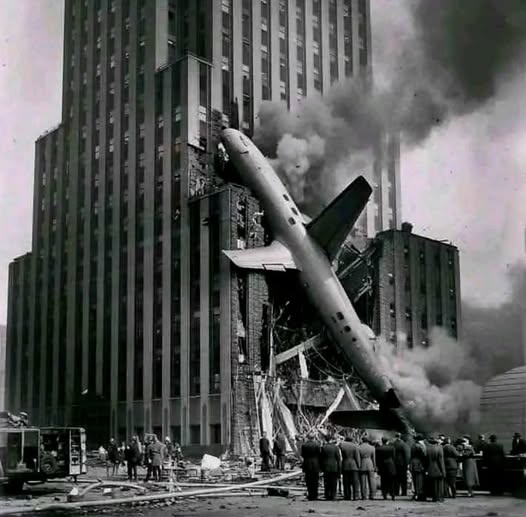A Forgotten Collision in the Clouds
On the foggy morning of July 28, 1945, New Yorkers were startled by a thunderous impact in Midtown Manhattan. A B-25 Mitchell bomber, piloted by Lt. Col. William F. Smith, had crashed directly into the Empire State Building, then the tallest building in the world.
The military aircraft, flying from Massachusetts to New Jersey, became disoriented in dense fog and was navigating blind through the skyscrapers of New York City. Despite warnings to avoid the area, the plane veered off course and at 9:40 a.m., it slammed into the north side of the building between the 78th and 80th floors.

🔥 The Aftermath
- The crash killed 14 people 11 inside the building and 3 crew members on the plane.
- One of the engines shot through the building, exiting the opposite side and crashing into a nearby penthouse.
- Fire raged through the impact zone, but firefighters managed to extinguish it in just 40 minutes.
- The building itself, surprisingly, remained structurally sound and reopened just two days later.
⚠️ A Sobering Moment in Aviation History
This incident, while tragic, led to important changes in airspace safety and building design regulations. It also proved the strength of the Empire State Building’s construction, a marvel of engineering in its time.
And perhaps most incredibly a woman named Betty Lou Oliver survived a fall of 75 stories in an elevator shaft, setting a world record that still stands.
🏙️ A Symbol of Resilience
The 1945 crash is a lesser-known chapter in New York’s long and storied history, but it remains a powerful reminder of human error, urban risk and the incredible strength of both architecture and human survival.
Leave a Reply